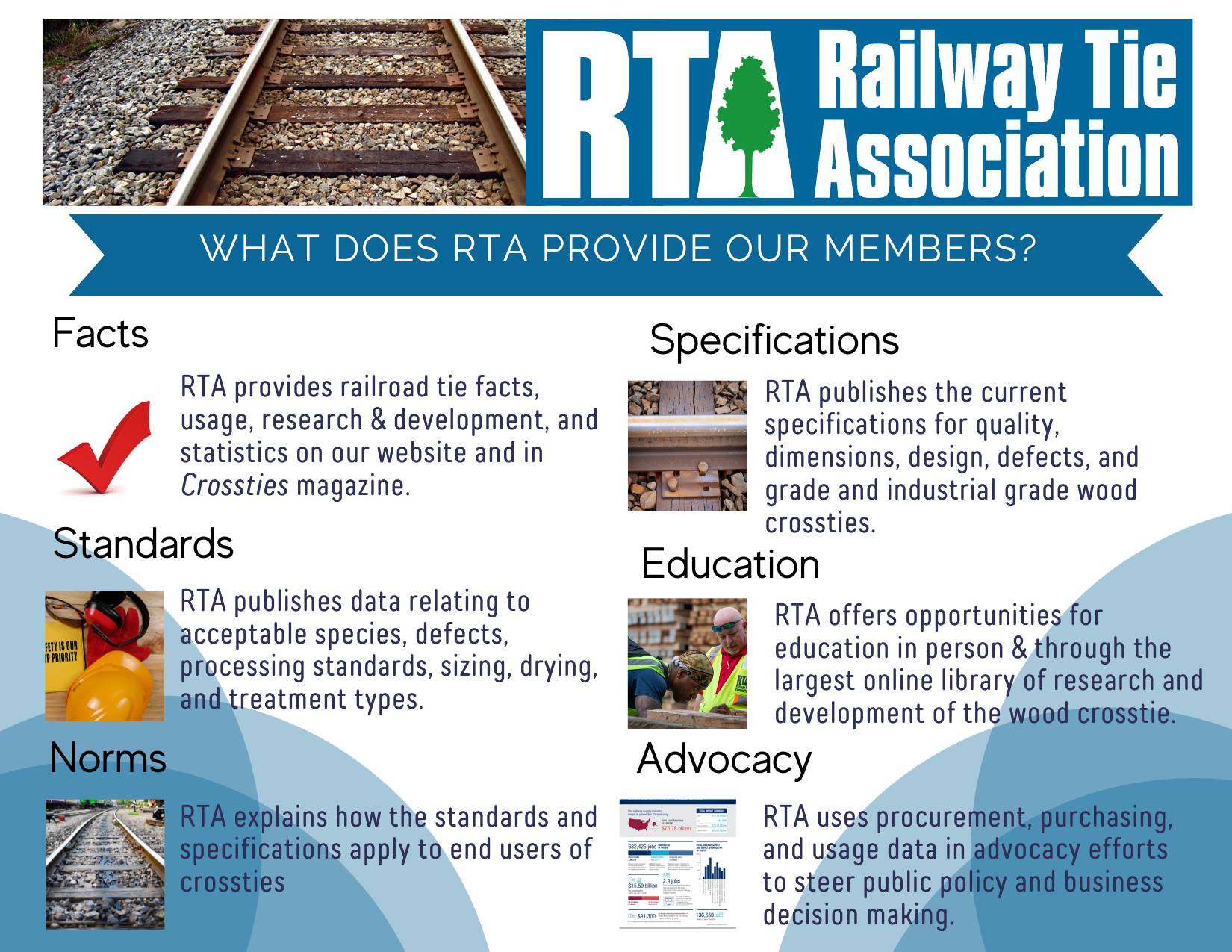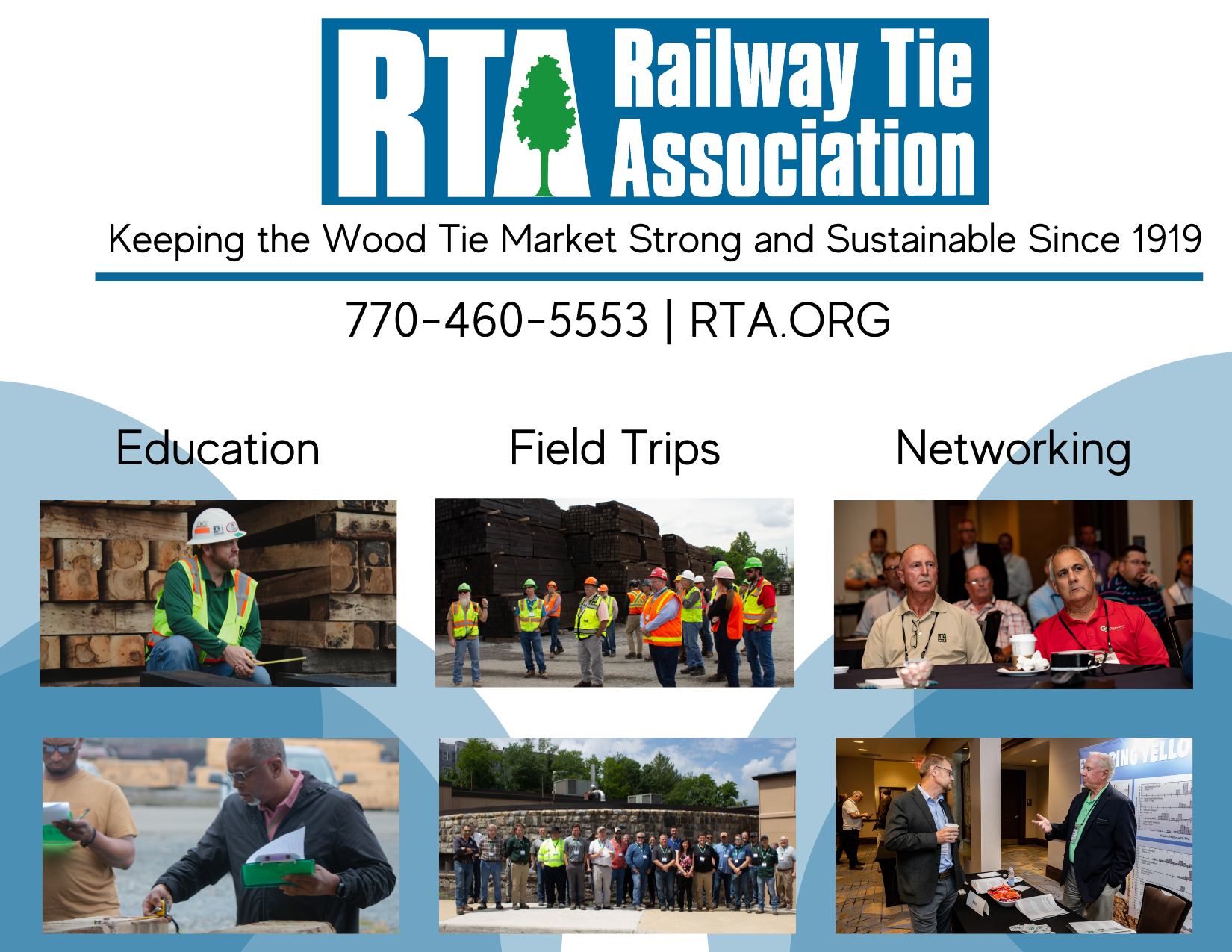What is RTA?
The Railway Tie Association was organized in 1919. Predecessor groups, dating back to the late 1800s, including The National Association of Railroad Tie Producers, supported the railroad tie industry and worked to preserve forests through conservation. See the Wikipedia article here.


Mission
To provide advocacy, community, and sustainability for the wood crosstie life-cycle.
Purpose
To keep the wood tie market strong and sustainable.
To do this, RTA advocates for and conducts activities including:
- Research in all aspects of the crosstie industry
- Sound forest management
- Timber resource conservation
- Timber processing
- Wood preservation
- Industry safety
- Sustainability
- Tie Recycling
The RTA is governed by a strict Antitrust Policy and members are reminded not to discuss pricing other than as historical information.
Our activities include:
Research and Development
Industry Statistics
Specifications
Develop, update, and publish specifications covering the quality of wood crossties, bridge ties, and switch ties.
Operations
Promote and maintain high standards of quality for wood crossties.
- Reflect the latest proven developments in design and treatment
- Provide information about good forestry practices
- Provide information about improved logging methods
- Provide information about best practices for manufacturing, handling, and processing
Click here for resources and research.
Government Affairs
- Support and attend Railroad Day on the Hill in partnership with the AAR, ASLRRA and NRC.
- Inform RTA members and others regarding policies and legislative activity affecting the crosstie industry
- Support all efforts to insure the health of the railroad, wood preserving, and sawmill communities
Annual Meetings
Annual Conference
Tie Grading Seminar
Field Trip
Scholarships for Forestry and Wood Science majors
Publications
Publish a bi-monthly magazine, CROSSTIES, covering all aspects of the wood crosstie industry.
Why RTA?
|



